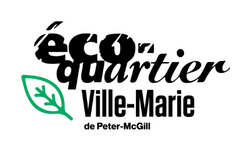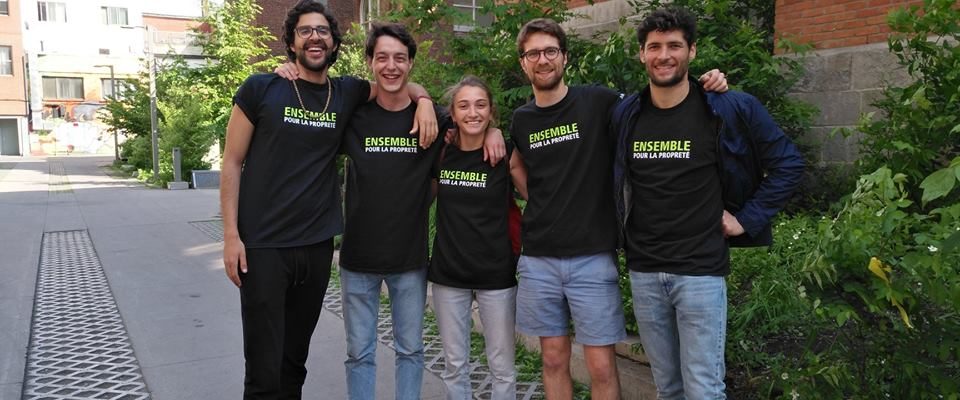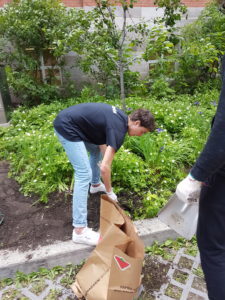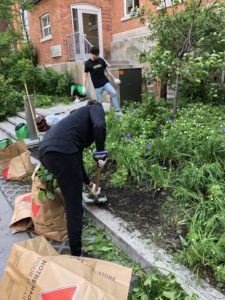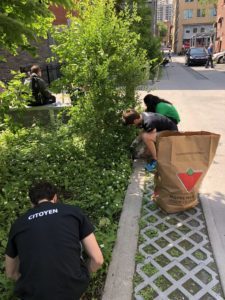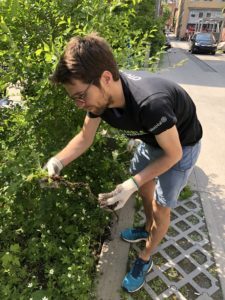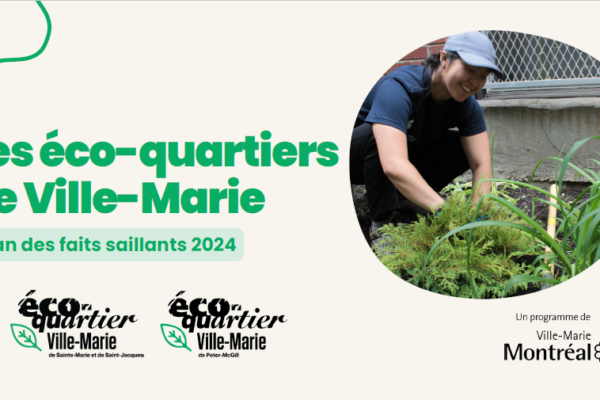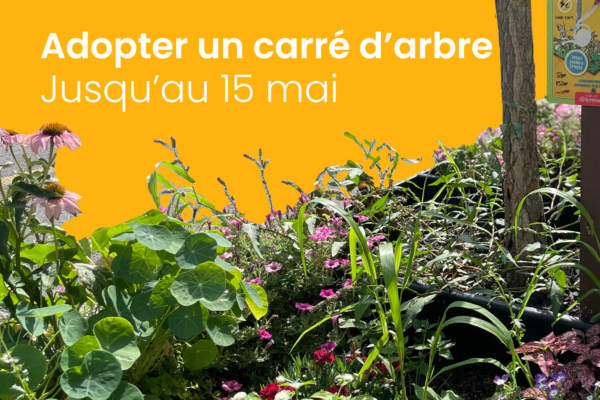Weeding activity with Simplyk volunteers Congratulation to the Simplyk volunteer team!
They came to help us weed out the gardens of l’École des métiers de la restauration et du tourisme de Montréal!
When spring comes plants regrow and it’s time for serious cleaning!
Here are the chores that are part of the spring maintenance activities.
- Clean up trash
- Remove all dead vegetation
- Determine the cause of death of plants and trees
- Teach volunteers how to recognize weeds from good plants that shouldn’t be removed.
Weeding can be a relaxing activity for some, or an exhausting chore for others.
But it is still an essential task to be done to keep our land parcels fresh and clean.
This is why it is recommended to weed at the beginning of spring, because it tends to be much easier than later on once the roots are stronger and weeds can become abundant.
Reminder: a weed is not necessarily a “bad plant” but rather a plant/vegetation that is not wanted where it is currently growing.
This being said, weeds are often the first plants to appear and cover a soil that is poorly maintained. Although many invasive weeds are not indigenous species, some indigenous species can be invasive weeds.
Many non-indigenous weeds are not invasive nor aggressive. Weeds in a vegetable-garden will almost always be undesirable, but that same weed might be desired if growing near trees.
Many weeds are actually very desirable, because they can be extremely resistant and can survive the tough conditions that are present in many school yards. These weeds have a higher tolerance to being stepped on than do other vegetation. A circle of weeds surrounding a tree can not only be aesthetic but also truly beneficial. Notably for the flora because it helps protect the soil from the sun and helps prevent humidity loss.
How to weed manually?
- Slowly pull out the plant from the soil, including all its roots.
- If the weed does not pull out easily, carefully try to loosen the surrounding soil with a garden fork and try again.
- Weed regularly (every 2 weeks or every week during the growth season).
- Remove the weed before the plant starts producing seeds to prevent further propagation of the weeds.
- Throw away young weeds (without seeds) in the compost, and throw away mature weeds (with seeds) in the trash because these can survive the compost.
- Always eliminate the weed completely before adding mulch to the soil. You can place a layer of newspaper (20 to 40 pages) on the flowerbed to help kill off any remaining roots, then spread the mulch over the newspaper. Since newspaper is biodegradable you can add some every year or twice a year when you renew the mulch.
A few tips to help the weeding process:
Weeds can be pulled out more easily when the soil is humid after being watered or after some rain.
Plan ahead a separate container for those mature weeds that have already started producing seeds.
Do not hesitate to contact us if you wish our assistance in the organization of corporate volunteering activities.
Follow us on Facebook! To stay updated on all our activities register to our newsletter.
